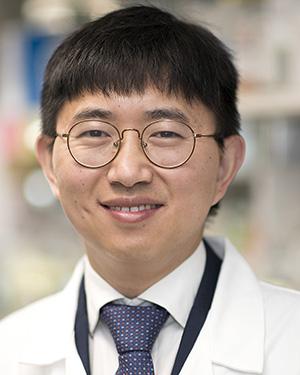Research News
10/02/2024
Connections between transposable elements and Alzheimer's disease found in large genomic analysis
Understanding how these pieces of DNA act in aging brains during Alzheimer’s disease is an important step toward developing new treatments, tests and cures.

A Cleveland Clinic-led collaboration has revealed new connections between pieces of DNA called transposable elements, or “jumping genes,” and the development of Alzheimer’s disease in aging brains.
The Alzheimer’s & Dementia: The Journal of The Alzheimer’s Association study is the first to systematically investigate how transposable elements (TEs) affect the rest of our genomes in health and disease. Previous preclinical work had shown associations between transposable elements and Alzheimer’s disease. However, nobody had performed any comprehensive analyses of all the TEs in our genomes to determine which ones were associated with the condition, and how they may contribute to its development. This data will inform future Alzheimer’s drug development and research.
What are transposable elements?
TEs, known colloquially as “jumping genes” or “viral elements”, are pieces of DNA that pop out of the chromosome and insert themselves elsewhere in our genomes. TEs can insert themselves into important genes, interrupting our genetic code to create severe genetic mutations that result in dysfunctional or nonfunctional proteins.
About 45% of the human genome is made up of transposable elements, and much of our energy is devoted to preventing them from jumping out of place and into other genes. During the aging process and neurodegeneration, less resources are devoted to suppressing TEs. Uncontrolled, TEs become dysregulated, and more mutations can occur.
How did researchers identify transposable elements associated with Alzheimer’s disease?
The study took place in the lab of Feixiong Cheng, PhD, director of Cleveland Clinic’s Genome Center. First author and Cheng Lab postdoctoral fellow Yayan Feng, PhD, analyzed genetic sequencing data from aging brains affected by Alzheimer’s disease from multiple national patient databases funded by the National Institutes on Aging at the National Institutes of Health (NIH).
The team identified widespread TE dysregulation in human aging brains; TEs were inappropriately turned on and off across different genetic backgrounds and disease manifestations. While widespread dysregulation was common across different types of Alzheimer’s disease, the team found specific TEs and risk factors associated with different groups. The researchers validated these findings in the lab using patient-derived brain cells, suggesting that individuals with different genetic backgrounds may benefit from tailored treatments for their disease.
Transposable elements flip a “master switch” to trigger inflammation in Alzheimer’s brains
Some DNA elements do not carry the instructions to build proteins. Instead, these DNA sequences act as “master switches” that change the expression levels of other, protein-coding genes. Dr. Feng and the team found some of these DNA sequences, when dysregulated, lead to inappropriate TE expression.
Co-author Dr. Xiaoyu Yang, PhD, who directs Functional Genomics Core at the Cleveland Clinic Genome Center, experimentally validated one of these “master switches” in dish tests on neurons derived from human cells. Artificially suppressing a transposable element called SINE (Short interspersed nuclear element) in these cells activated one regulatory element that in turn activated several anti-inflammatory genes. One of the key genes that protects our brains from inflammation is already associated with Alzheimer’s when mutated, but the team identified two others previously unconnected to the disease.
“By identifying these regulatory elements, our analyses are more comprehensive,” says Dr. Cheng. “We were able to identify far more protein-coding genes and transposable elements whose expression in aging brains are altered during Alzheimer’s disease. These findings will help us identify more potential therapeutic targets to help prevent and treat the disease.”
The team received help interpreting their data from collaborators on the team including James Leverenz, MD (Director, Luo Ruvo Center for Brain Health); Charis Eng, MD, PhD (Genomic Medicine); Andrew Pieper, MD, PhD (Case Western Reserve University, Louis Stokes Cleveland VA Medical Center, Harrington Discovery Institute); Yin Shen, PhD (University of California, San Francisco)
Dr. Cheng adds that even though his team’s analyses focused primarily on Alzheimer’s disease, their overall findings have wide-reaching implications in many other neurogenerative diseases and age-related diseases.
“Understanding how dysregulation of non-coding genetic elements occurs in aging brains is an important step towards developing therapies that preserve brain function and help us live healthier, happier lives as we get older,” he says.
This research was supported by grants from the National Institute on Aging (NIA).
The research team wishes to dedicate this paper to the memory of Charis Eng, MD, PhD, founding Chair of Genomic Medicine Institute. She will be remembered for her lifelong dedication to human genetics, personalized genomic healthcare research and mentorship. Her legacy will live on in this and future research studies at the Cleveland Clinic Genome Center and beyond.
Featured Experts
News Category
Related News
Research areas
Want To Support Ground-Breaking Research at Cleveland Clinic?
Discover how you can help Cleveland Clinic save lives and continue to lead the transformation of healthcare.
Give to Cleveland Clinic